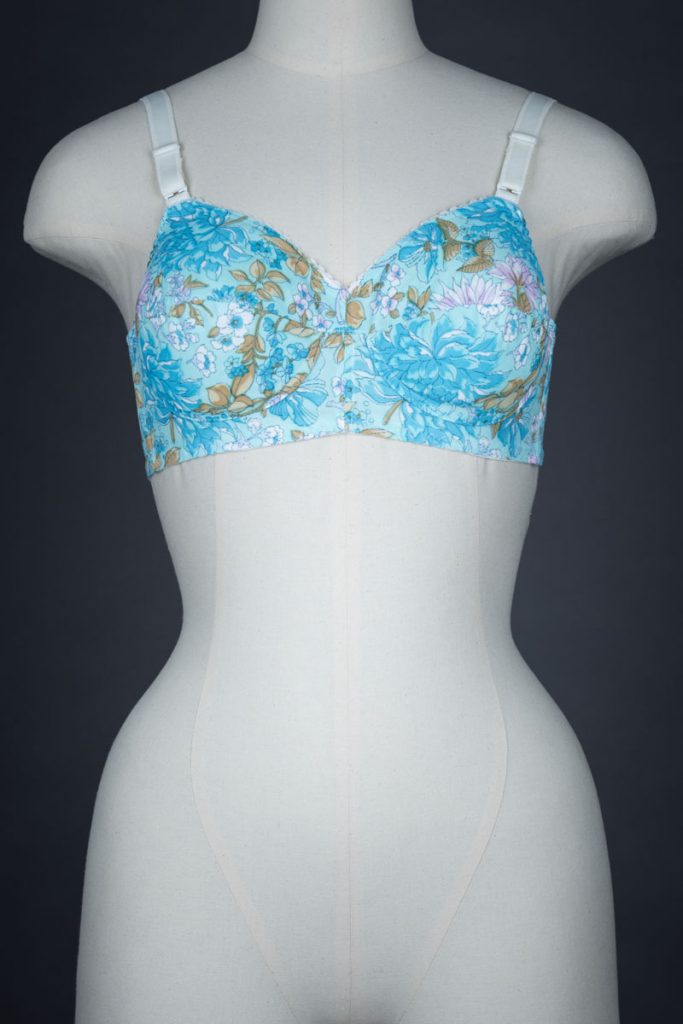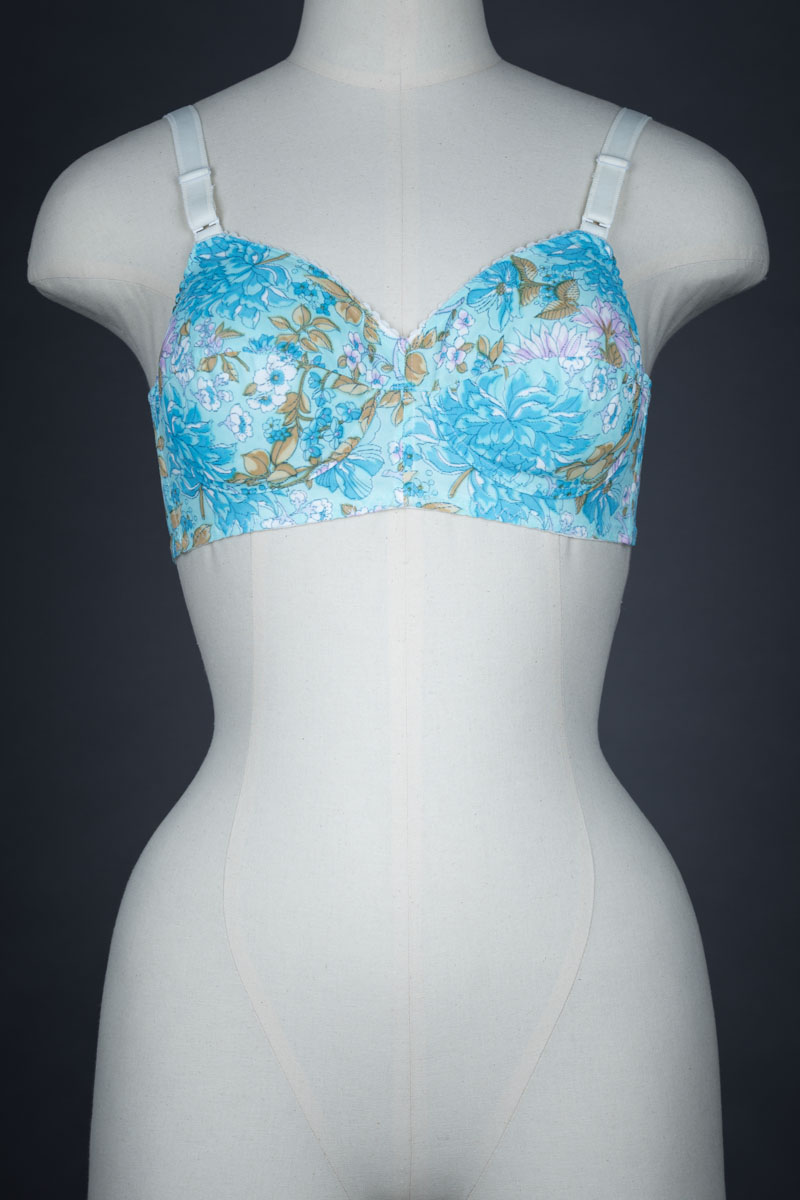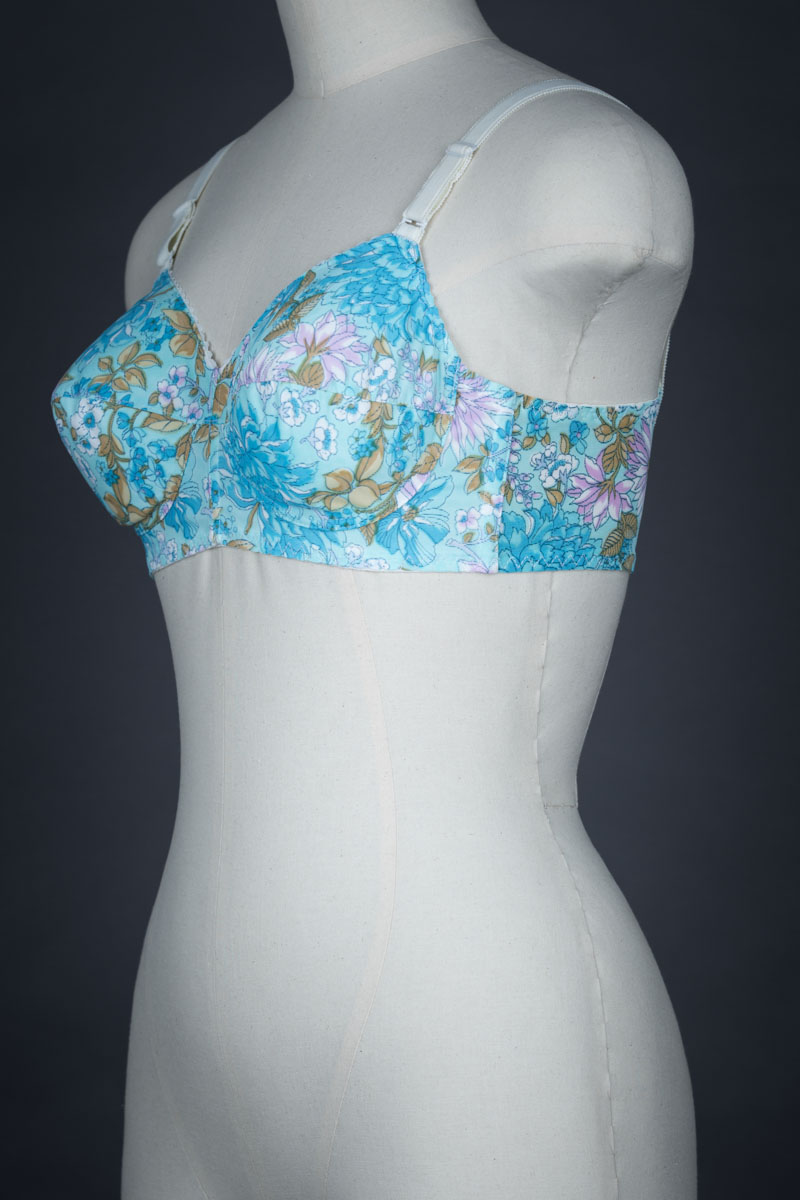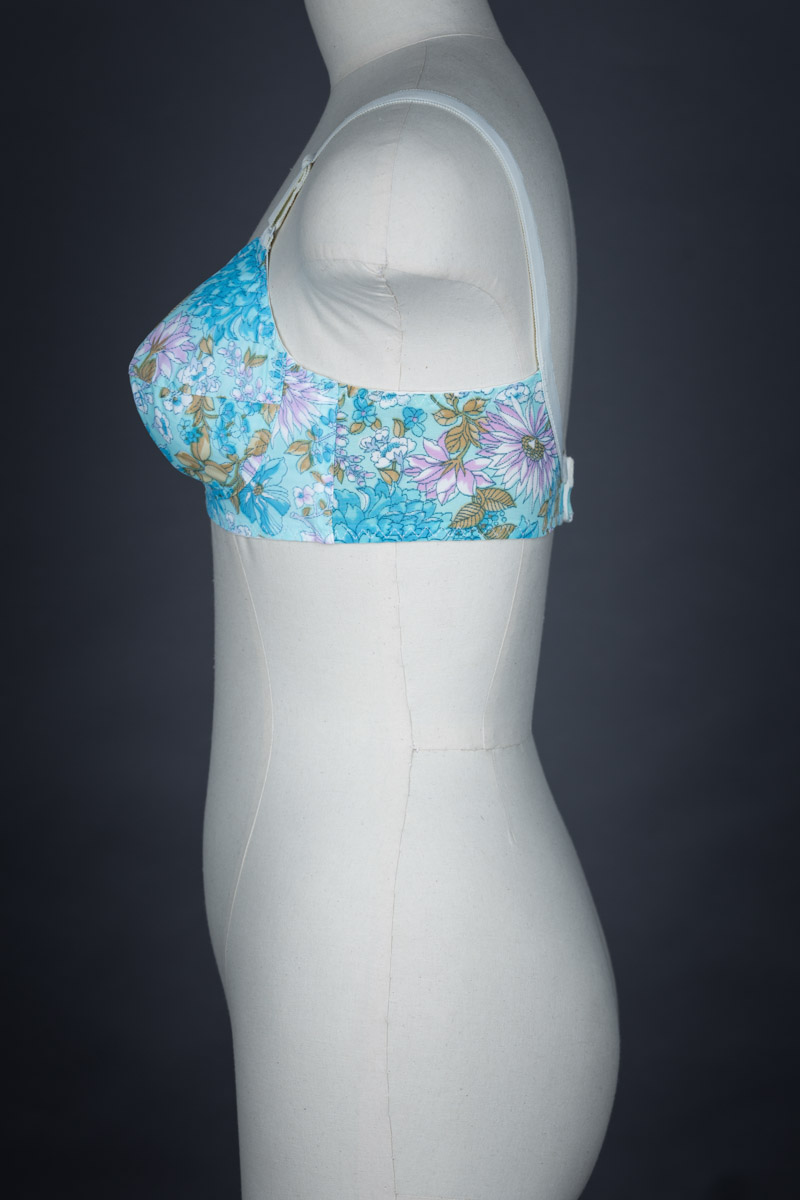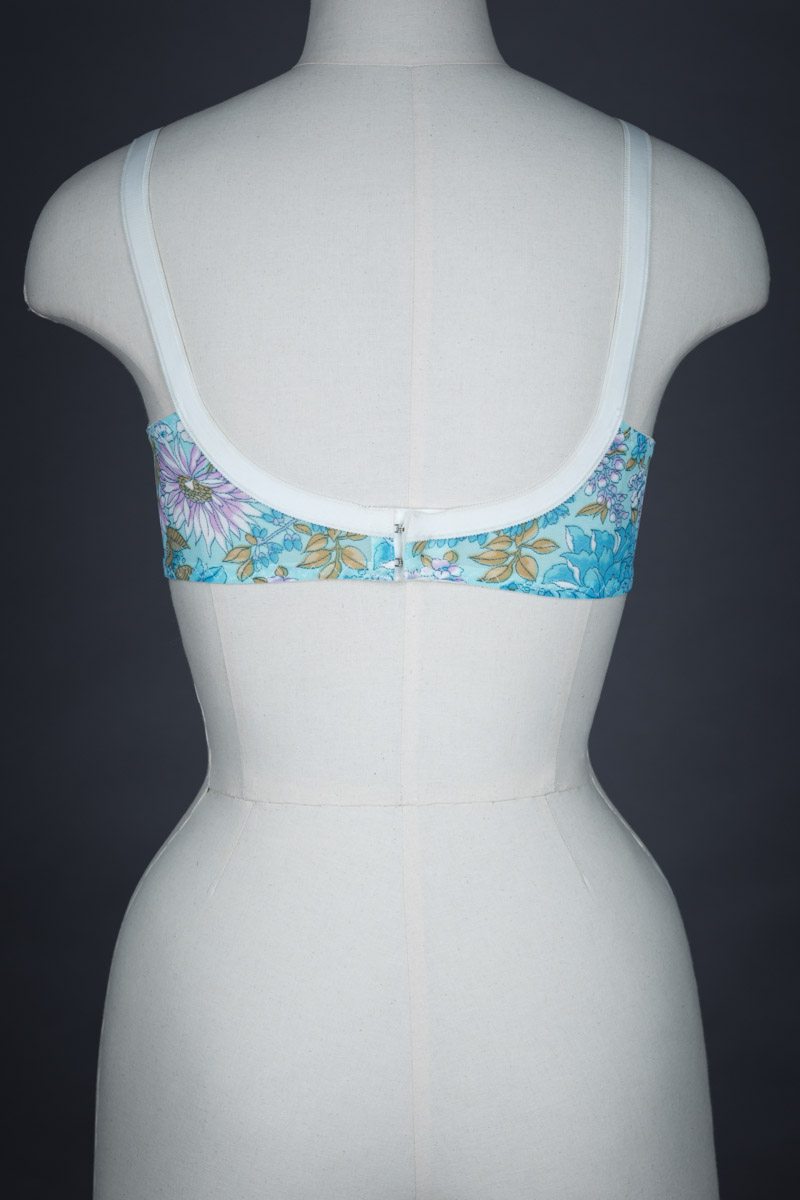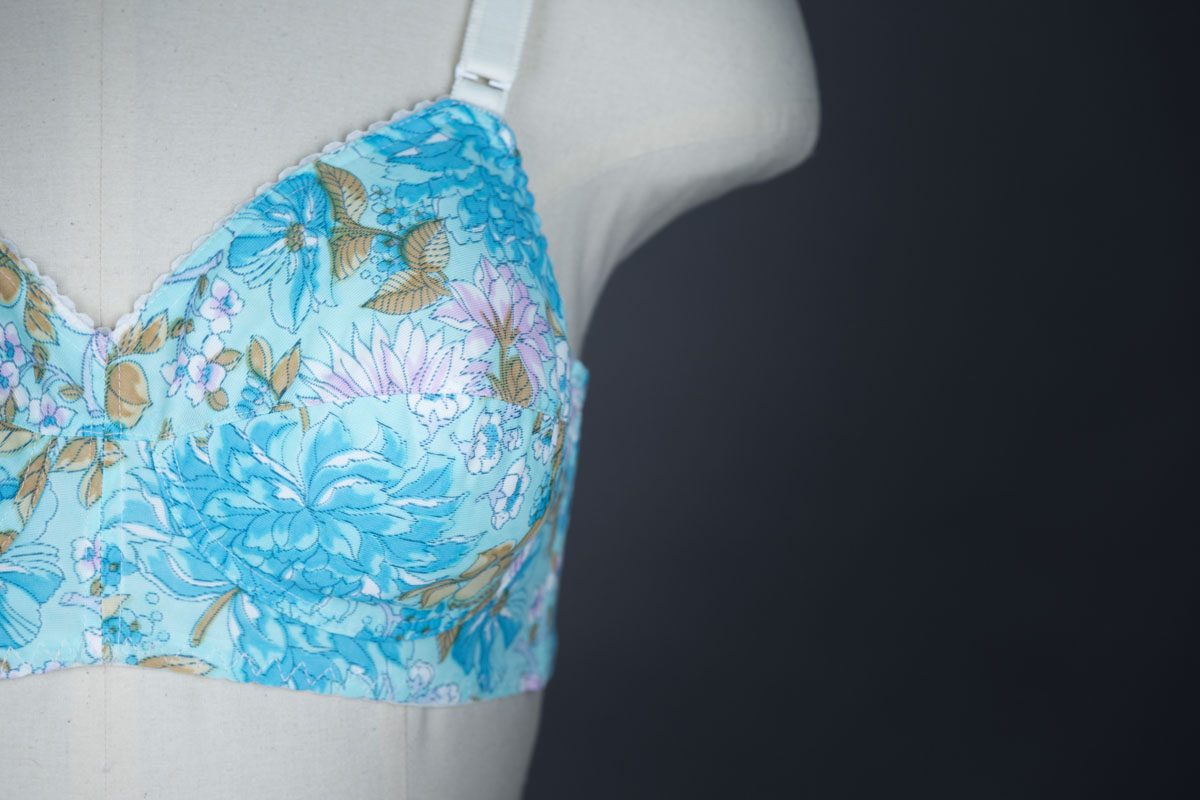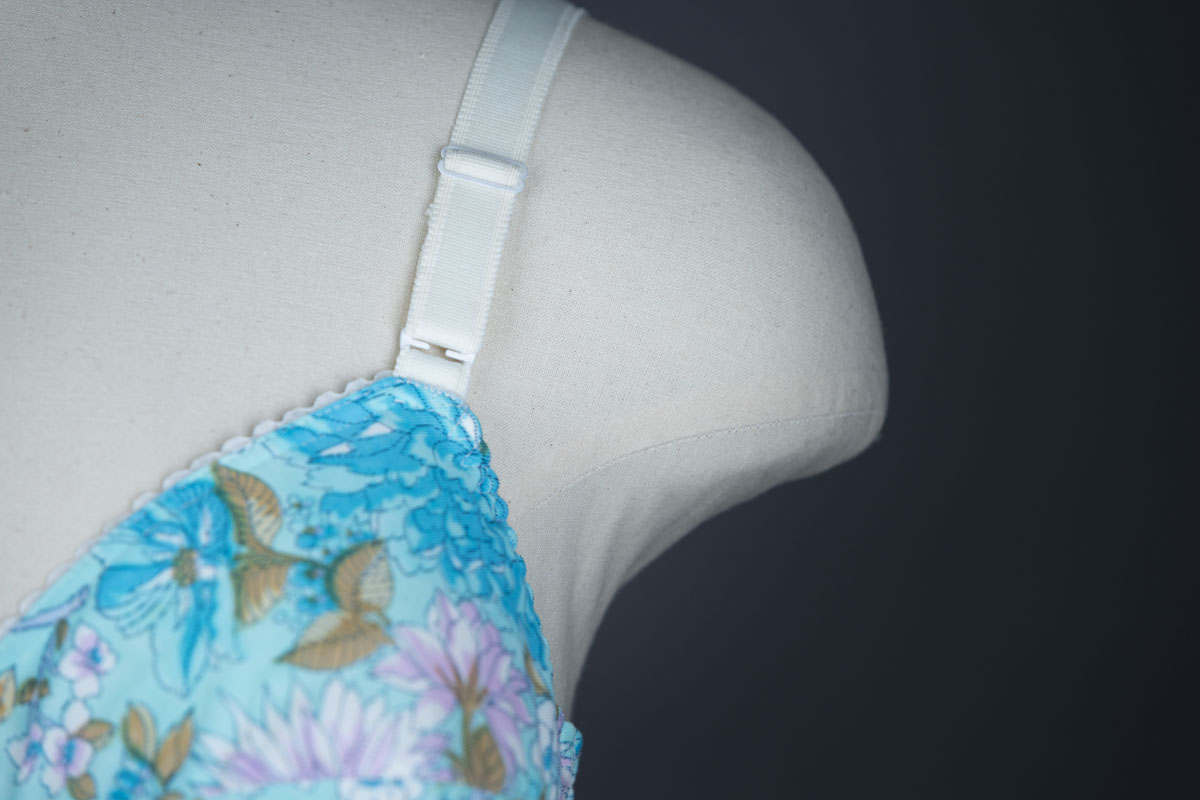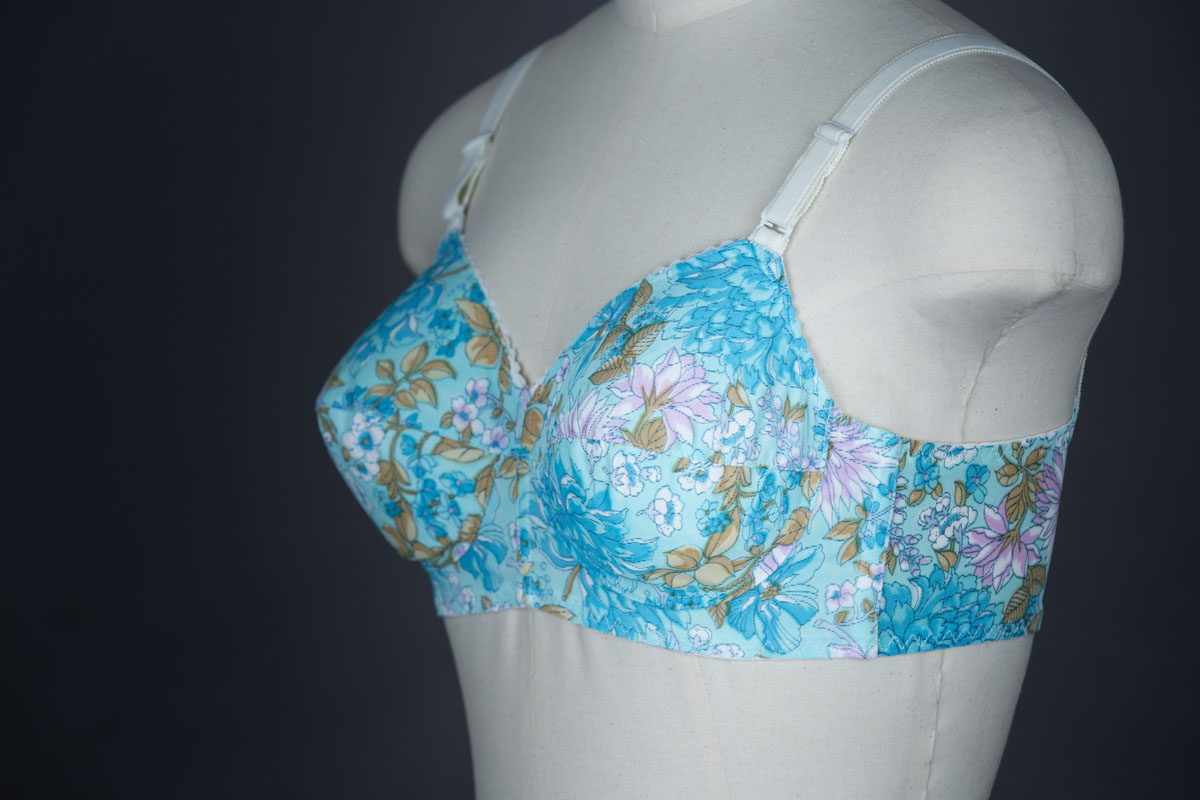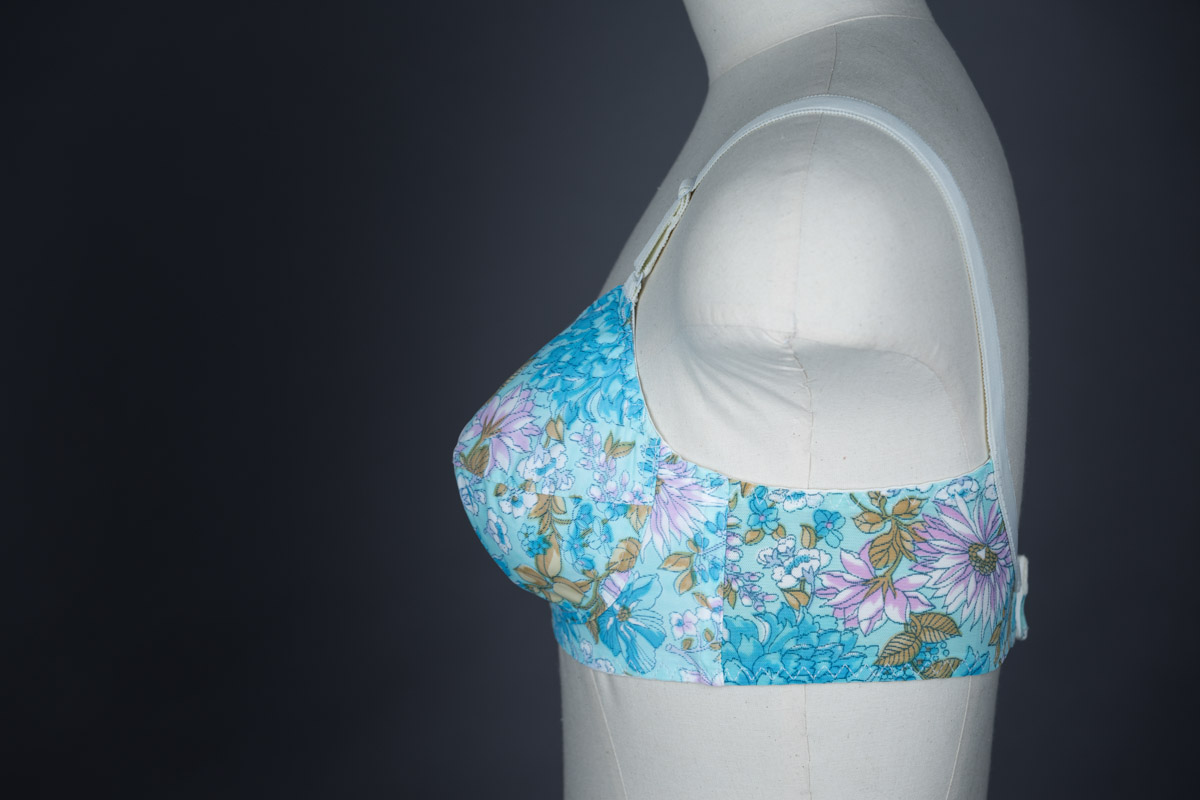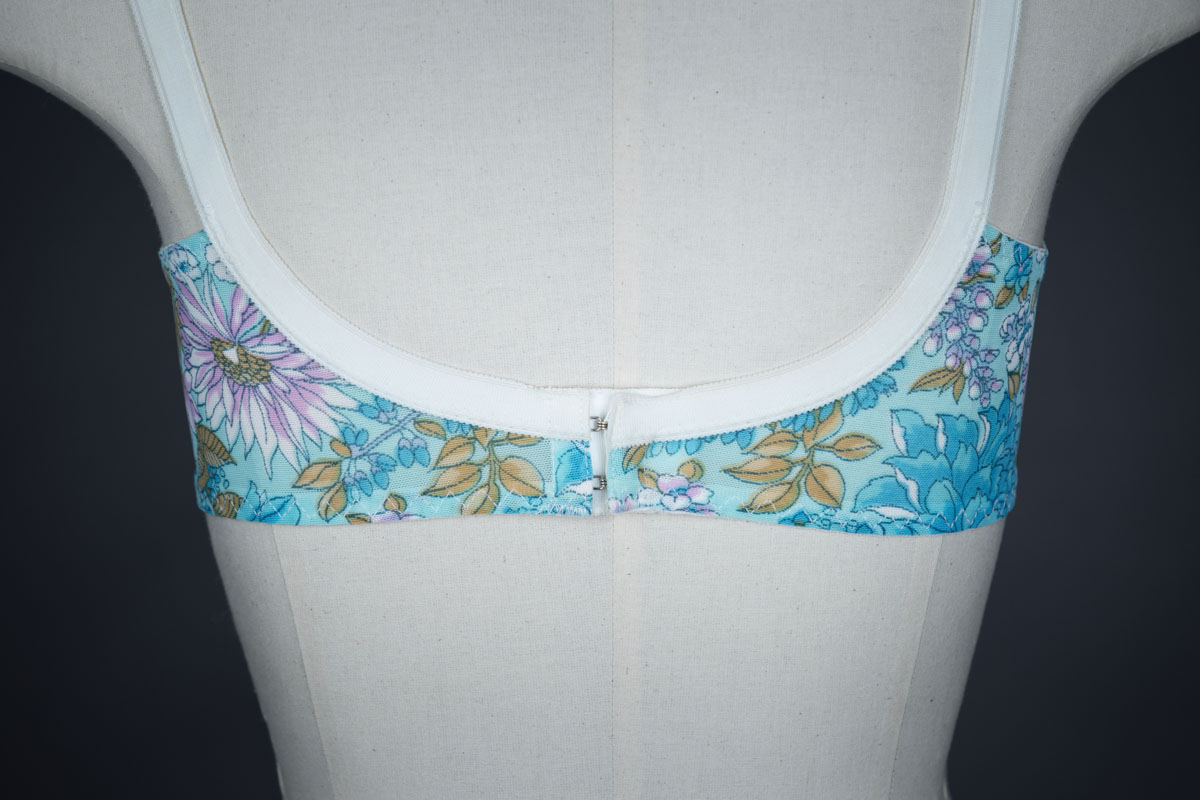Date: c. 1970s
Origin: United Kingdom
Fabric: Nylon Powernet
Brand: St. Michael
This bra, part of a co-ordinating St Michael set from the early 1970s, features non-stretch nylon cups with stretch powernet wings that have been printed to match the fabric on the cups. A slight colour difference has developed with age but, when new, it would have been tricky for anyone without an expert eye to distinguish between these fabrics.
In the 1950s, with Ismar Glasman as Director of Technology, Marks & Spencer had begun working on colour standardisation across fabrics in its clothing and, because colours can appear to change under different lighting conditions, became the first retailer to standardise lighting in its stores. This, plus a light box used by Marks & Spencer and its suppliers from the mid 60s to monitor the colour of fabrics under different lighting conditions, meant that coordinating separates became a much more viable proposition. Colour matched ladies’ lace underwear sets were introduced in 1966, as reported in the September / October 1967 issue of St Michael News which says: ‘A year ago, St Michael introduced colour-matching all over lace bras, briefs and girdles, many of which partnered all-over lace slips. Now the look has spread to include many of today’s prettiest flower prints.’ A double page feature on women’s underwear in the February / March 1968 issue shows that this colour-matching trend continued.
Pioneering the ‘factory-to-shop’ system with its own brand name (St Michael, used from 1928-1999) and a close relationship to its suppliers, UK retailer Marks & Spencer became famous in the twentieth century for quality at reasonable prices. The company’s history began when Michael Marks opened his first market stall in Leeds in 1884 selling useful items to working class people on low incomes, for the single price of a penny. By the time he moved to Manchester in 1894, he had a dozen Penny Bazaar market stalls and was looking for a partner in order to expand the business. He was introduced to Tom Spencer and their partnership became a limited company in 1903, expanding to 60 outlets by 1908.
From the collection of Lorraine Smith
